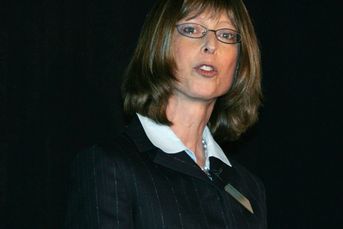Case-Shiller: Real estate marts still mixed
The latest S&P/Case-Shiller Home Price Index, released today, shows a mixed picture: Some metro markets are improving, others are still searching for a bottom, and prices are down an average 0.2% in November across 20 metropolitan markets.
The latest S&P/Case-Shiller Home Price Index, released today, shows a mixed picture: Some metro markets are improving, others are still searching for a bottom, and prices are down an average 0.2% in November across 20 metropolitan markets.
From a peak in the second quarter of 2006 through November, the 20-city index is off 30%. It bottomed in April 2009, after dropping 32.6%.
Home prices across the U.S. are now at similar levels to where they were in late 2003, Standard & Poor’s said.
Charlotte, Las Vegas, Seattle and Tampa hit new lows in November.
San Francisco reported its eighth consecutive month of positive returns, San Diego reported its seventh, and home values in Los Angeles and Phoenix rose for the sixth straight month.
Year over year, “Dallas, Denver, San Diego and San Francisco have finally entered positive territory, something we really haven’t seen in at least two years in most markets,” David Blitzer, chairman of the index committee at Standard & Poor’s, said in a statement.
Only five of the metro areas tracked by the index posted positive monthly returns in November.
So while “home prices are far more stable than they were a year ago, there is no clear sign of a sustained, broad-based recovery,” Mr. Blitzer said.
Separately, as reported last week, the latest reading of commercial real estatement prices showed some firming as well.
The Moody’s/REAL Commercial Property Price Index showed a 1% gain in November, after 13 consecutive months of declining values.
The index is now down 43% from its peak in October 2007.
The index is based on repeat sales of properties worth $2.5 million or more, using data from Real Estate Analytics LLC.
Although it’s too soon to predict a bottom, pessimism for commercial real estate has dissipated, said Neal Elkin, president of Real Estate Analytics.
“One of most telling things [in the latest data] is that, for first time, we’re having a two-way discussion about where this market headed,” he said in an interview.
Observers are closely watching sales of distressed commercial property for signs of further weakness.
Prices of troubled assets have firmed since May, but sales volume has remained languid, indicating that owners may be holding them off the market.
“While the overall trading volume numbers are certainly not bullish, they are also not inconsistent with a price bottom or floor,” David Geltner, director of research at the MIT Center for Real Estate, said in a commentary last week.
Owners of commercial properties overall now have a -8% annualized return over the lifetime of their investments, he said.
In May, owners faced an average 25% annualized loss on their commercial property holdings.
The improvement in the rate of return shows that owners are “not rushing to the door” to sell, Mr. Elkin said.
Still of concern is the $80 billion worth of 2006-to-2008-vintage commercial-mortgage-backed securities loans maturing in 2011 and 2012, Mr. Geltner said in his report, and another $260 billion maturing in 2016 and 2017.
Loans made in that period financed properties that are often now worth less than the loan.
If holders of commercial property can’t refinance their debts, forced sales could put downward pressure on prices, observers said.
Moody’s Investors Service predicts further deterioration in fundamentals and lower prices in the near term.
But “the worst of the value declines is likely over,” Moody’s said in a report last week.
“We expect that commercial-property prices will ultimately flatten out for the longer term at levels 30% to 40% below the peak,” Moody’s wrote.
Learn more about reprints and licensing for this article.





